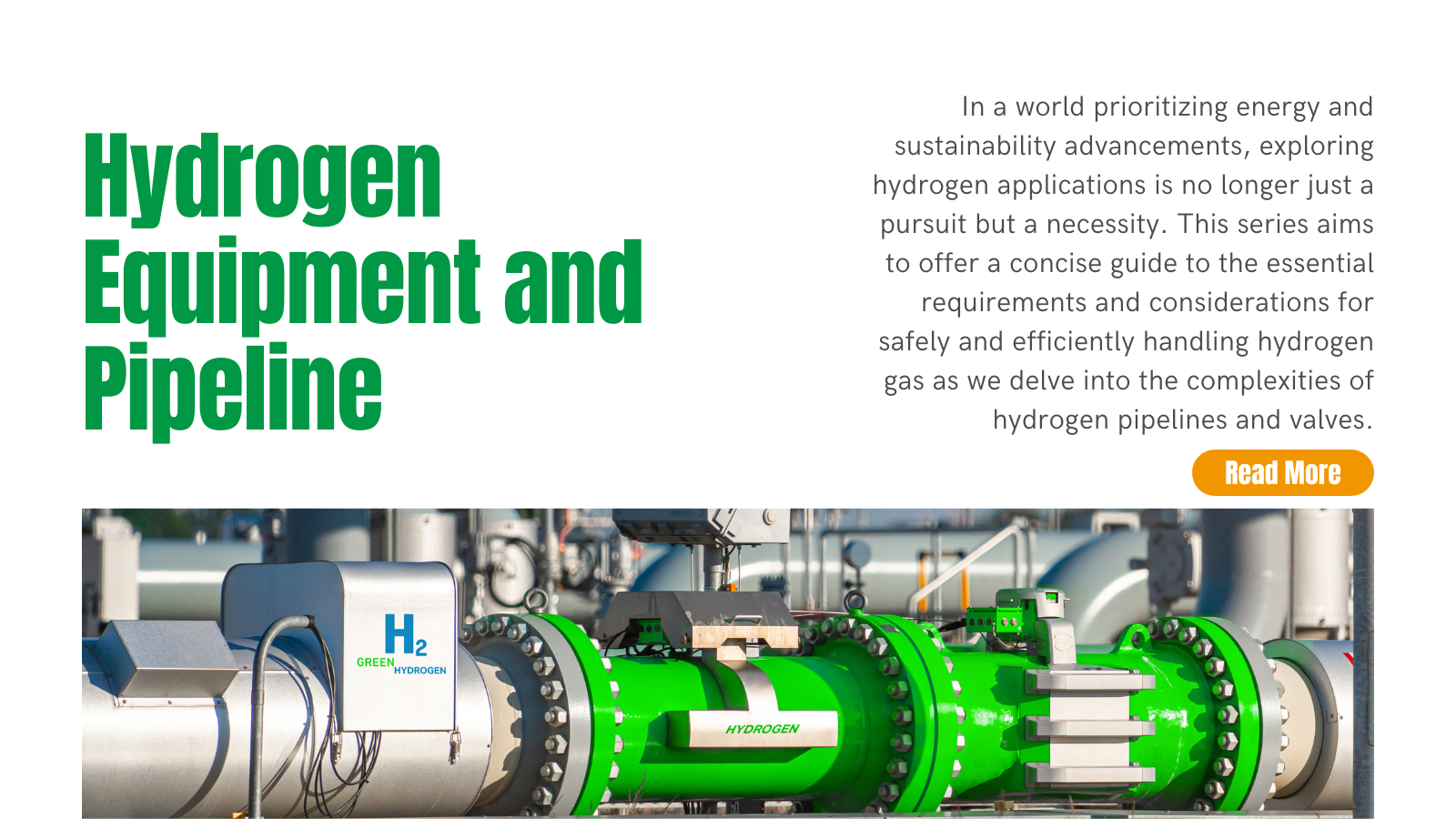Requirements for Hydrogen Pipelines and Valves (Part 2) - Hydrogen Equipment and Pipeline

In a world where advancements in energy and sustainability are at the forefront, the exploration of hydrogen applications becomes not just a pursuit but a necessity. As we delve into the intricacies of hydrogen pipelines and valves, this series aims to provide a comprehensive guide to the requirements and considerations vital for the safe and efficient handling of hydrogen gas.
In this second part, "Hydrogen Equipment and Pipeline," we unravel the safety measures imperative for hydrogen stations and supply equipment. The focus is not only on the technical specifications of materials and flow rates but also on the critical safety protocols to prevent leaks, mitigate risks, and ensure the secure operation of hydrogen systems.
As we navigate the complexities of hydrogen technology, it's essential to acknowledge the ongoing commitment of INOX-TEK. Although presently in the developmental phase, INOX-TEK is diligently working towards pioneering products that align with the evolving landscape of hydrogen applications. With a dedication to innovation and adherence to global safety standards, INOX-TEK envisions a future where hydrogen emerges as a key player in the sustainable energy paradigm. Join us in this exploration of hydrogen's potential, as we pave the way for a safer, greener, and more energy-efficient world.
Safety Requirements for Equipment and Pipelines
- Safety measures for hydrogen stations or supply equipment should include:
- Safety relief devices such as safety valves.
- Hydrogen vent pipes at the highest point of hydrogen tanks.
- Pressure gauges for testing.
- Nitrogen purging and replacement interface.
- Prevent hydrogen leakage in equipment; ensure the sealing of components like instruments and valves; conduct regular inspections, promptly addressing any hydrogen leaks.
- Install check valves between hydrogen pipelines and connected devices to prevent external flames from reaching the hydrogen system. For welding, cutting, and using hydrogen as fuel or protective gas, install flame arresters on each hydrogen equipment branch.
- When inspecting for gas leaks in hydrogen equipment, pipelines, and valve connections, use neutral soap water or portable flammable gas detection alarms; do not use open flames for leak checks.
- Electrical equipment in explosive zones should meet explosion-proof requirements. If non-explosion-proof equipment is necessary in explosive zones, take explosion-proof measures.
- Hydrogen pipelines should have sampling and purging ports. The highest point should have an exhaust pipe with a flame arrester.
- In case of freezing in hydrogen pipelines, valves, and water seals, use hot water or steam for thawing. Avoid using open flames or tools like hammers.
Material and Flow Rate of Pipelines
Material Selection for Hydrogen Pipelines:
- As per national hydrogen station design standards, seamless steel pipes should be used for hydrogen pipelines.
- For hydrogen purity ≥99.999%, use internally electropolished low-carbon stainless steel pipes (316L) or internally electropolished stainless steel pipes (304).
- For hydrogen purity ≥99.99%, use internally electropolished stainless steel pipes (304) or seamless steel pipes.
- For hydrogen purity <99.99%, use seamless steel pipes.
Maximum Hydrogen Flow Velocity in Carbon Steel Pipes:
| Hydrogen Purity |
Material |
Maximum Flow Velocity |
| ≥99.999% |
Internally Electropolished SS (316L) |
25 m/s |
| ≥99.99% |
Internally Electropolished SS (304) |
25 m/s |
| <99.99% |
Seamless Steel Pipes |
25 m/s |
Test Medium and Test Pressure for Pipelines
| Test Medium |
Test Pressure |
| Hydrogen |
Working Pressure x 1.5 (minimum 0.6MPa) |
Conclusion:
In conclusion, while INOX-TEK is currently in the developmental phase of hydrogen-related products, the commitment to innovation and adherence to stringent safety standards are paramount. INOX-TEK, dedicated to advancing hydrogen applications in pipelines and valves, aims to align with global green energy initiatives, ensuring a future where safety, efficiency, and environmental sustainability converge.
